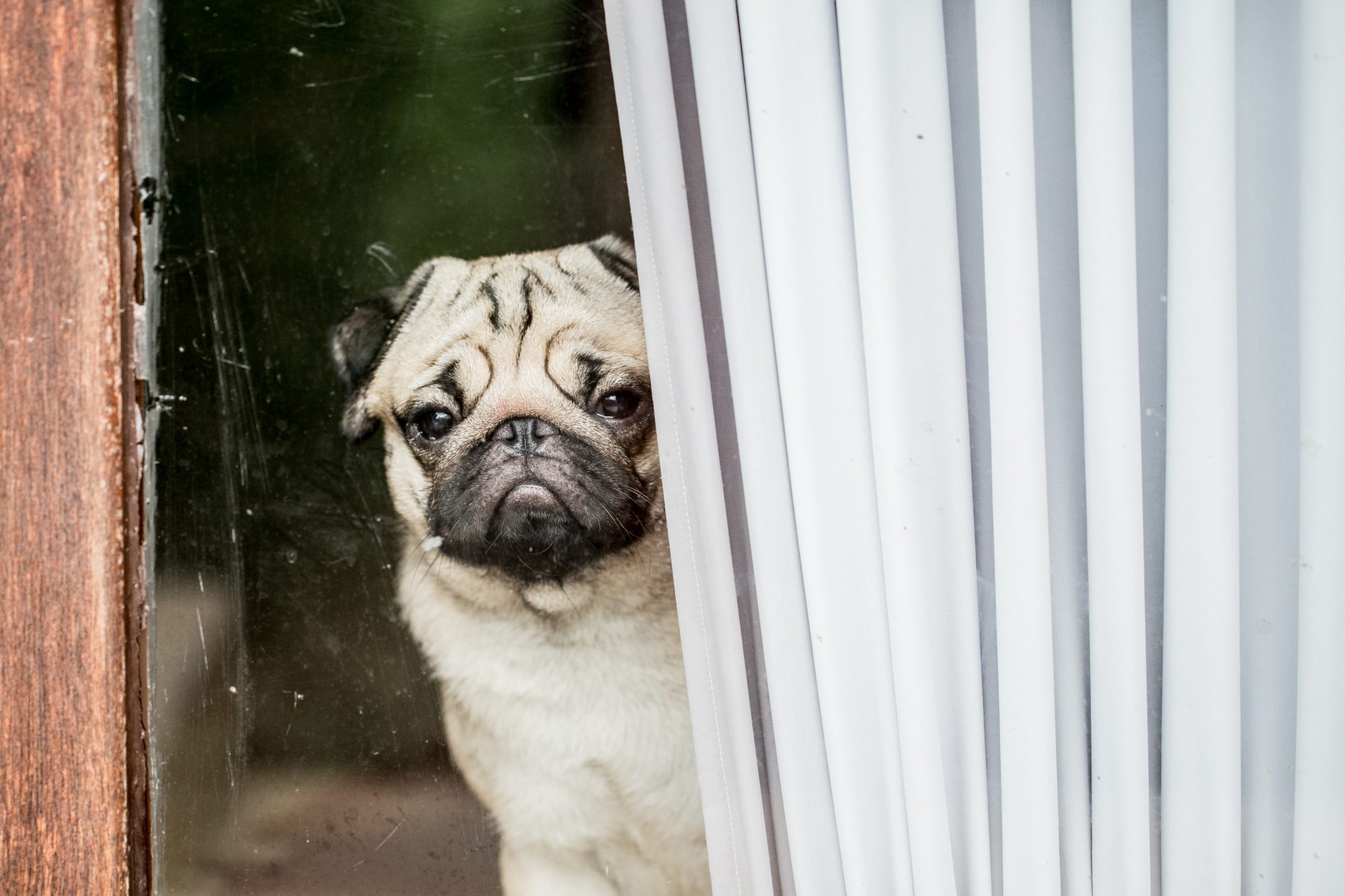Dog Separation Anxiety

If you are a teacher or, like most dog owners with kids, your canine has received a lot more attention during the summer break. Or if you’re now being asked to come back into the office after working at home. Dogs are ruled by routine, so we must help ease them through major changes to their typical day.
This is why we at Oakland Veterinary Referral Services expect to see a spike in dog separation anxiety as we begin spending less time at home. As we return to school or work life, your pet may exhibit unusual symptoms or behavior. Let’s take a closer look.
What Is Dog Separation Anxiety
In a nutshell, dog separation anxiety is an intense dislike of being alone. This fear can develop when a pet has been undersocialized in the past or has behavioral issues like noise anxiety and phobias. If your dog is especially clingy, you may have what we call a “Velcro pet”. Dogs who have experienced trauma can be prone to this disorder.
Behaviors associated with separation anxiety are as follows:
- Chewing, digging, and other forms of destructive behavior
- Pacing
- Panting excessively
- Trembling
- Attempts to escape or hide
- Clinginess
- Urinating/defecating in the home
- Changes in appetite and sleep
What You Can Do to Prevent Separation Anxiety in Dogs
Since your pet has enjoyed more time with you or the family, the change to spending more time alone can be hard. It’s even more so for those dogs with severe cases of anxiety. Instead of an abrupt change in routine away from your pet, make the transition as slow and steady as possible.
Make sure to first make an appointment with your veterinarian, in the event a medical issue is exacerbating the anxiety and other symptoms.
- Stay consistent with the routine. If you normally feed your dog before you head out, make sure to stay consistent. Get them used to when they will be eating, exercising, going out to potty, and getting daily snuggles. Even on weekends, or other days off, stick to the routine to ease your pet’s fears.
- Incremental time alone is key. Make time away a gradual thing. Start small by going out for a few hours at a time. Have your dog spend time in another room by providing some toys and chew things for them to enjoy some solo time.
- Crate train your dog. If your pet is already familiar with the crate, have them spend some time there while you work or prepare dinner. Give them toys and positive rewards while they are resting in their “den”.
- Give them things to do. Provide several types of toys and games for your dog to enjoy. Something that is challenging, like a treat puzzle or a Kong filled with a frozen banana or peanut butter will keep them occupied and feeling good.
- Consider a pet sitter or dog walker. As you start being out of the house for several hours at a time, your pet may feel stressed and afraid. Consider giving them a midday break by having a sitter, friend, neighbor, or the like swing by to take them out and play with them.
- Downplay the goodbyes and hellos. If you respond emotionally to your dog’s reactions when you leave or come home, this reinforces their anxiety. It entrenches the belief that they are not okay when you are not there. Instead, stay calm and act relaxed, but not too excited when you come home. Attend to the day-to-day tasks around the house, while engaging your pet in a normal routine.
Is Your Dog Having Trouble?
If your dog is suffering from extreme anxiety and stress, they may be dealing with a phobia. We can help by providing behavioral consultation and recommendations for medications, supplements, and behavior modification. Please call us for more information.


